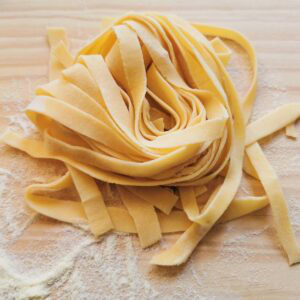Probably the most well-known and loved type of Italian egg pasta ribbon has to be tagliatelle. This traditional pasta from Emilia-Romagna is really versatile and goes so well with all kinds of sauces. Making homemade tagliatelle pasta is super-easy and the result tastes so much better than the dried or ready-made versions!
History and origins.
Tagliatelle is popular throughout Northern Italy. However, it is said to have been invented in Bologna in the late 1400s. Some food historians claim that this egg pasta was first made when Giovanni II of Bentivoglio, Lord of Bologna, asked his chef to prepare a banquet in honor of Lucrezia Borgia. She was due to visit the city on her way to Ferrara to marry Duke Alfonso D’Este.
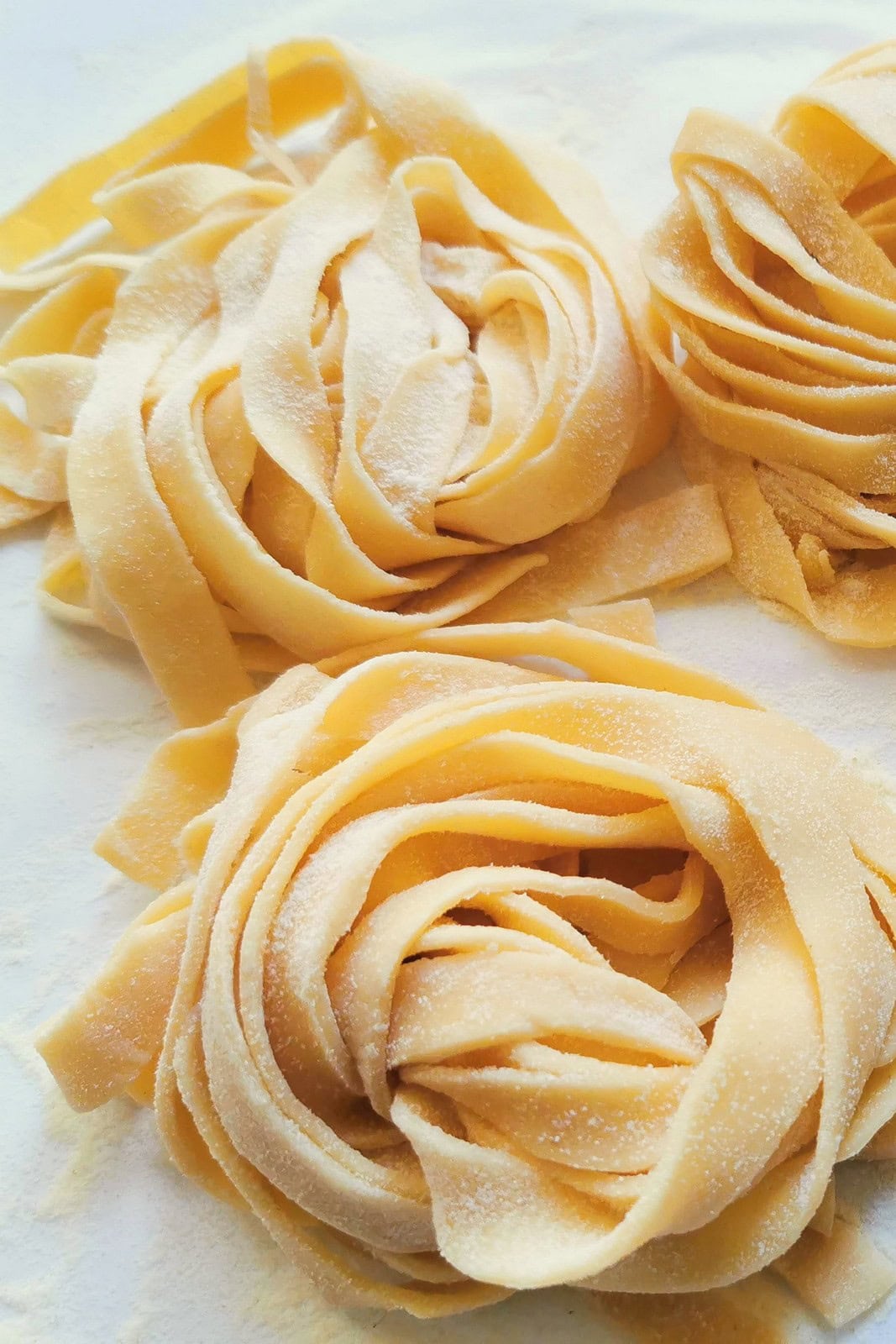
The story goes that the Lord’s chef, Mastro Zefirano, prepared a fabulous banquet, which included a new type of pasta he made by cutting classic lasagne pasta sheets into long golden strips in honor of the bride-to be’s legendary blonde hair. This pasta became known as tagliatelle!
Whether that story is fact or not, it is certainly true that tagliatelle became a traditional pasta in the Emilia-Romagna region and is THE pasta Italians pair with Bolognese.
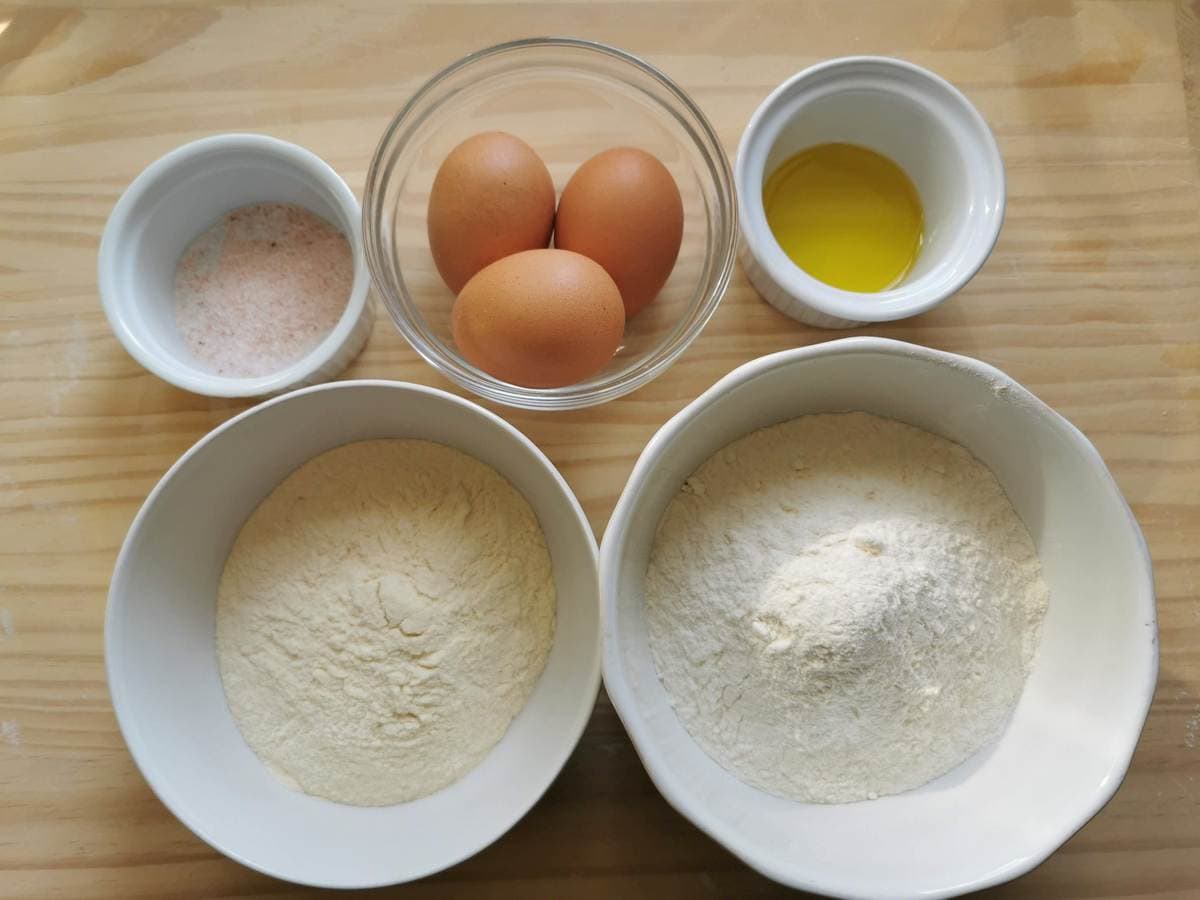
Ingredients for homemade tagliatelle pasta.
The simplest and probably most traditional version of homemade tagliatelle has just soft wheat flour and eggs. However, in recent times it has become popular to add a little salt, remilled semolina flour (semola rimacinata) and olive oil to the egg pasta dough. The recipe below is based on that of Bruno Barbieri, one of Italy’s most famous chefs who makes his egg pasta dough with salt and olive oil.
Flour: Soft wheat flour which Italians call ‘00’ flour is the main type of flour for homemade tagliatelle pasta. ‘00’ refers to the fineness of the flour. If necessary, you can also use all-purpose flour instead. I also included durum wheat semolina flour (durum flour) which helps the pasta stay intact when cooked You will also need a little extra flour for dusting.
Eggs: If you want truly perfect homemade pasta, it is very important that the eggs are very fresh, and it is equally important that they come from hens raised outdoors (free range) on organic feed. These eggs will ensure your pasta is both healthier and tastier!
You can also use just the egg yolks (3-4 medium yolks for each 100g of flour). However, although your fresh tagliatelle will be richer and bright yellow in color, it may also be more delicate than when you use whole eggs.
Olive oil: Extra Virgin Olive Oil will give you the best results. Adding a little oil to the tagliatelle dough makes the mixture much more elastic and consequently stronger. The organoleptic characteristics of EVO also helps to enrich the taste of fresh pasta, making it more fragrant.
Salt: Adding salt to fresh pasta dough is more a question of taste. However, it’s important that the salt is very fine, otherwise you may find tiny granules of salt in the pasta.
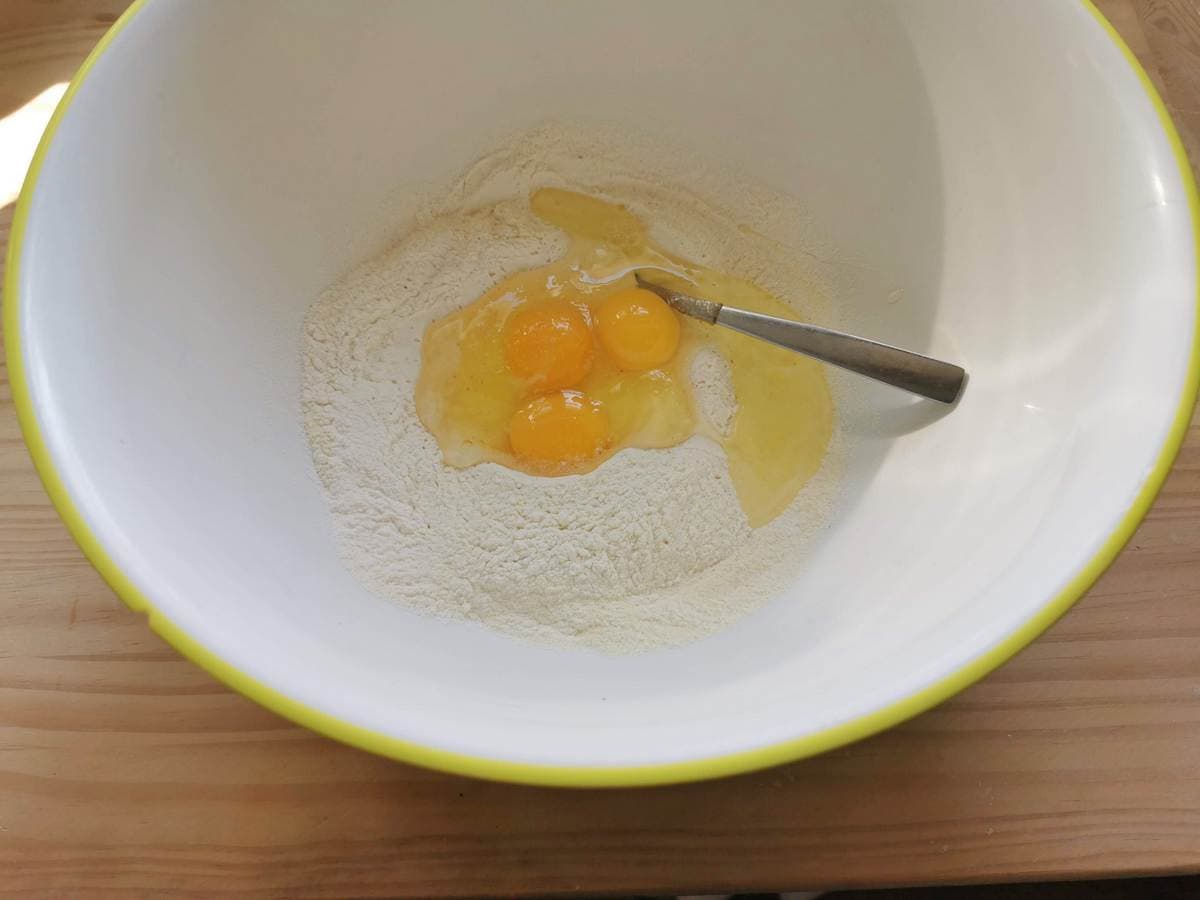
Step by step how to make tagliatelle.
Make the dough.
1) First, sift the two types of flour into a bowl and mix together with a fork or your hands. Make a well in the centre of the flour and break in the eggs and add a good pinch of salt if using.

2) Beat the eggs with a fork and then add the olive oil.
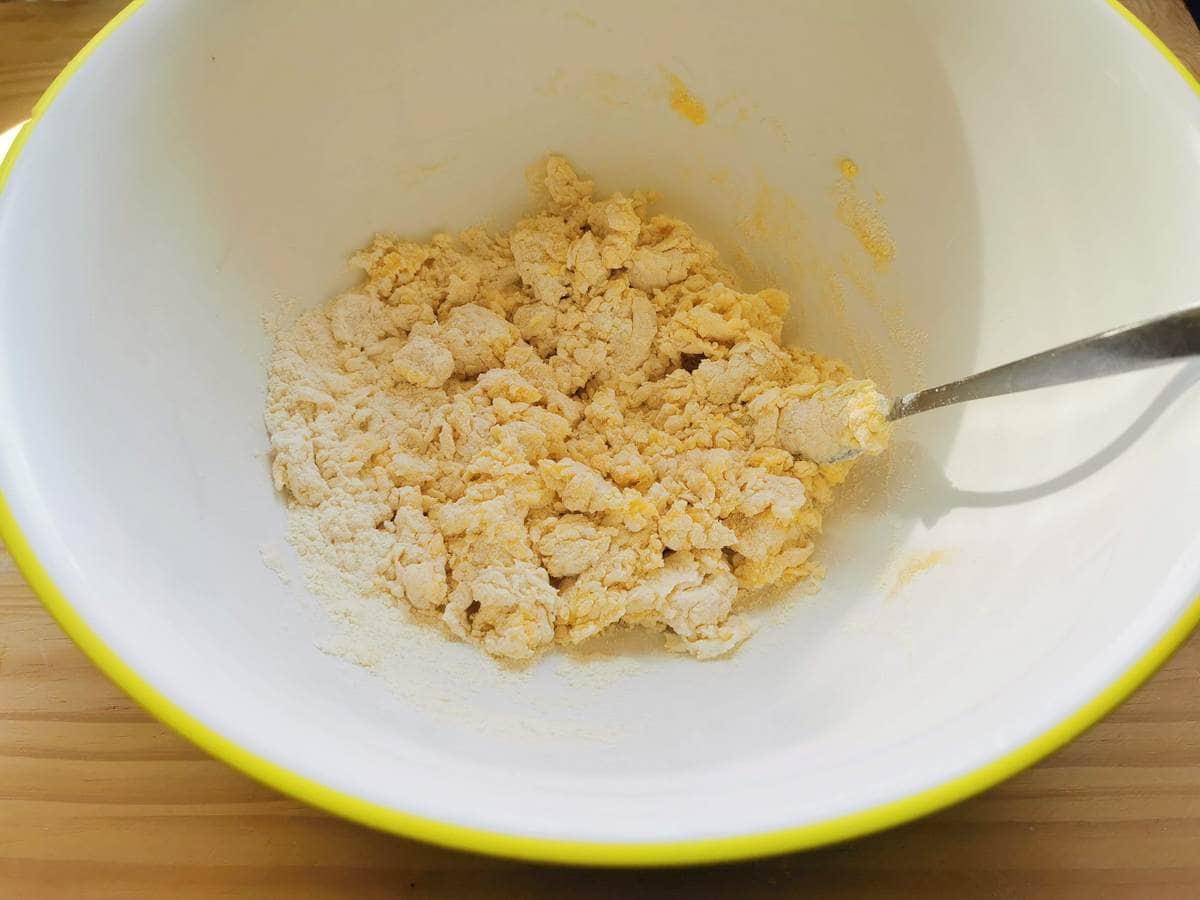
3) Mix the flour into the oil and eggs until completely incorporated.
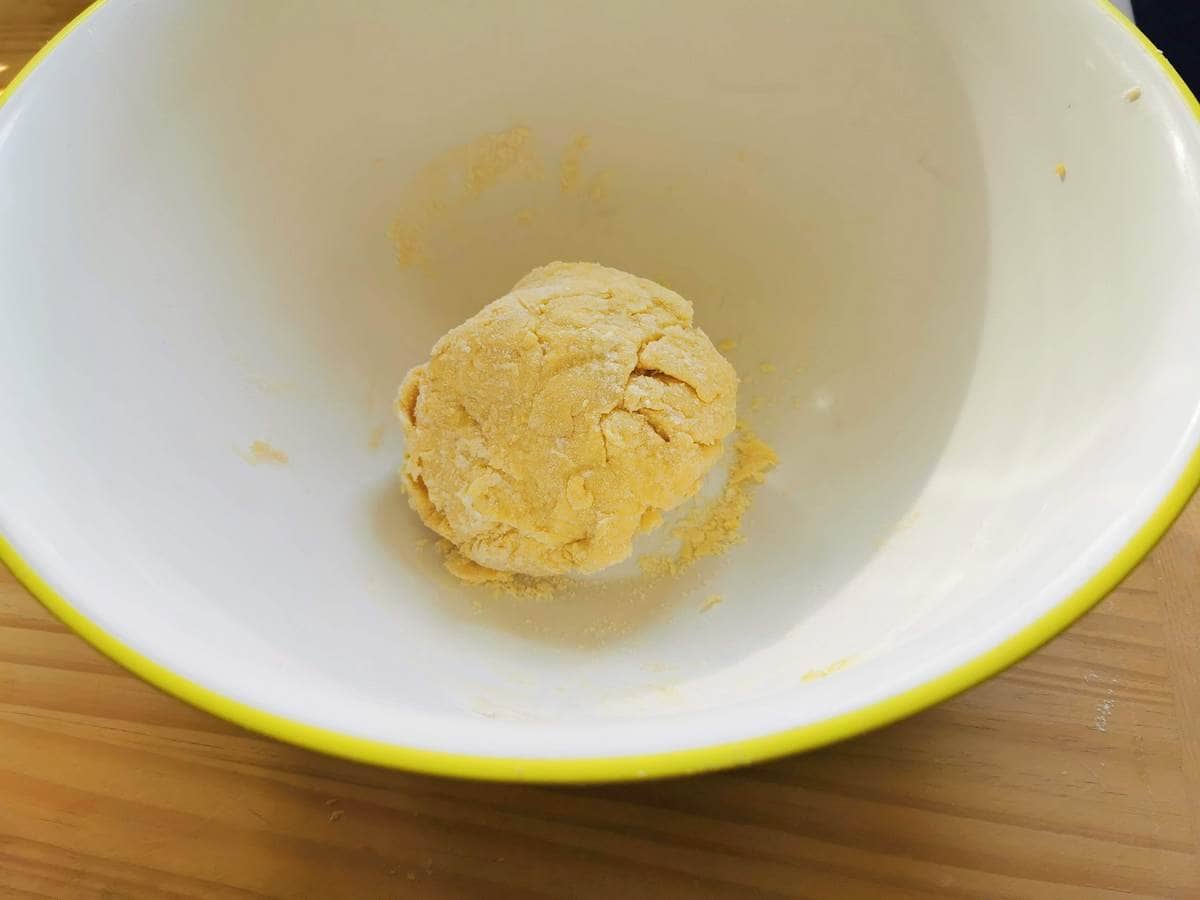
4) Then using your hands, knead the mixture until it no longer sticks to the sides of the bowl, and you can form a rough ball of dough.
5) Turn the dough out on to a lightly floured surface and continue kneading using the heel of your hand until the dough is smooth and elastic. Roll the dough into a ball and wrap it in cling film (plastic wrap). Let the dough ball rest at room temperature for at least 30 minutes to one hour.
Make your homemade tagliatelle.
6) Once the dough has rested, cut off about one third and re wrap the rest of the fresh dough so it doesn’t dry out. Flatten the piece of dough with your hands or a rolling pin. Then pass it through your pasta machine at the widest setting. (Mine is 7 but some are 1).
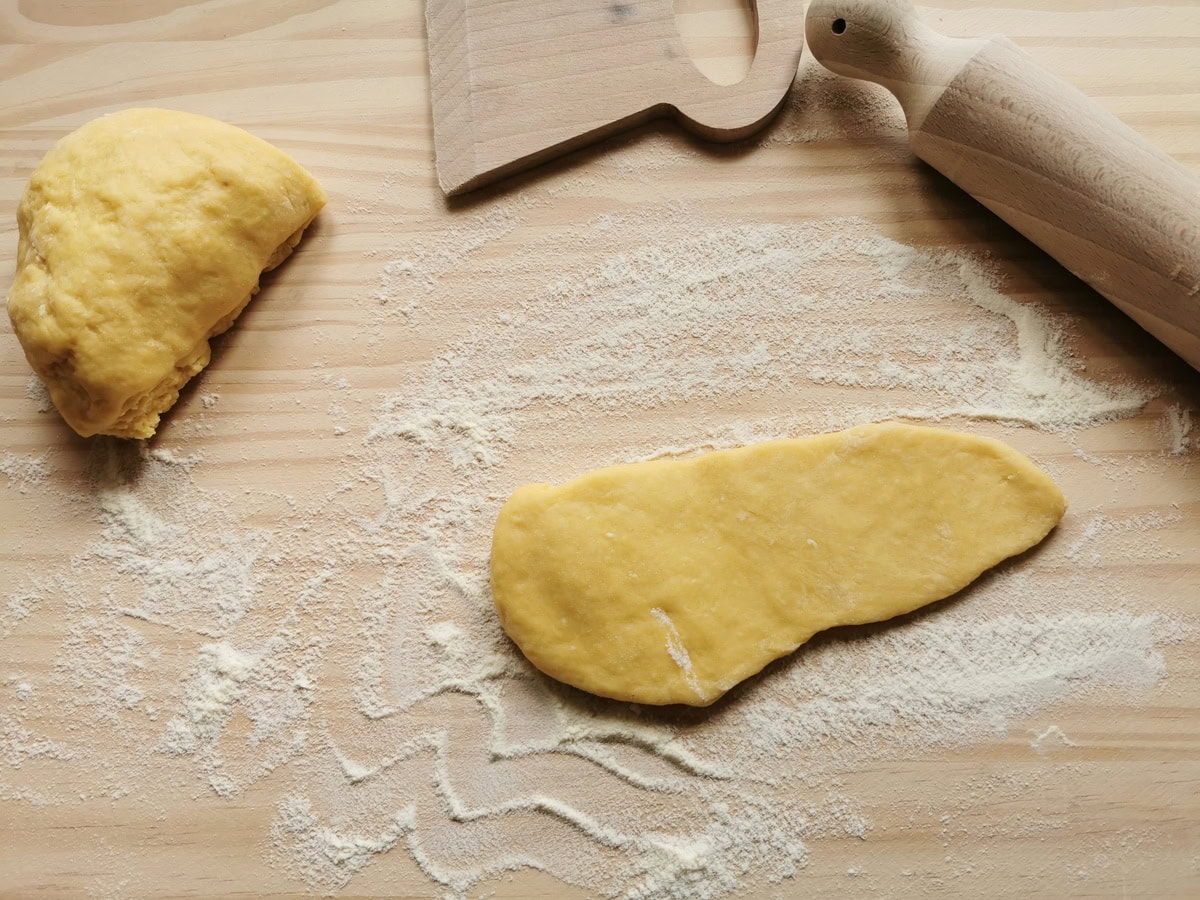
7) Fold the first dough sheet into thirds and pass it through the same setting with the narrowest side first. Repeat this step again twice.
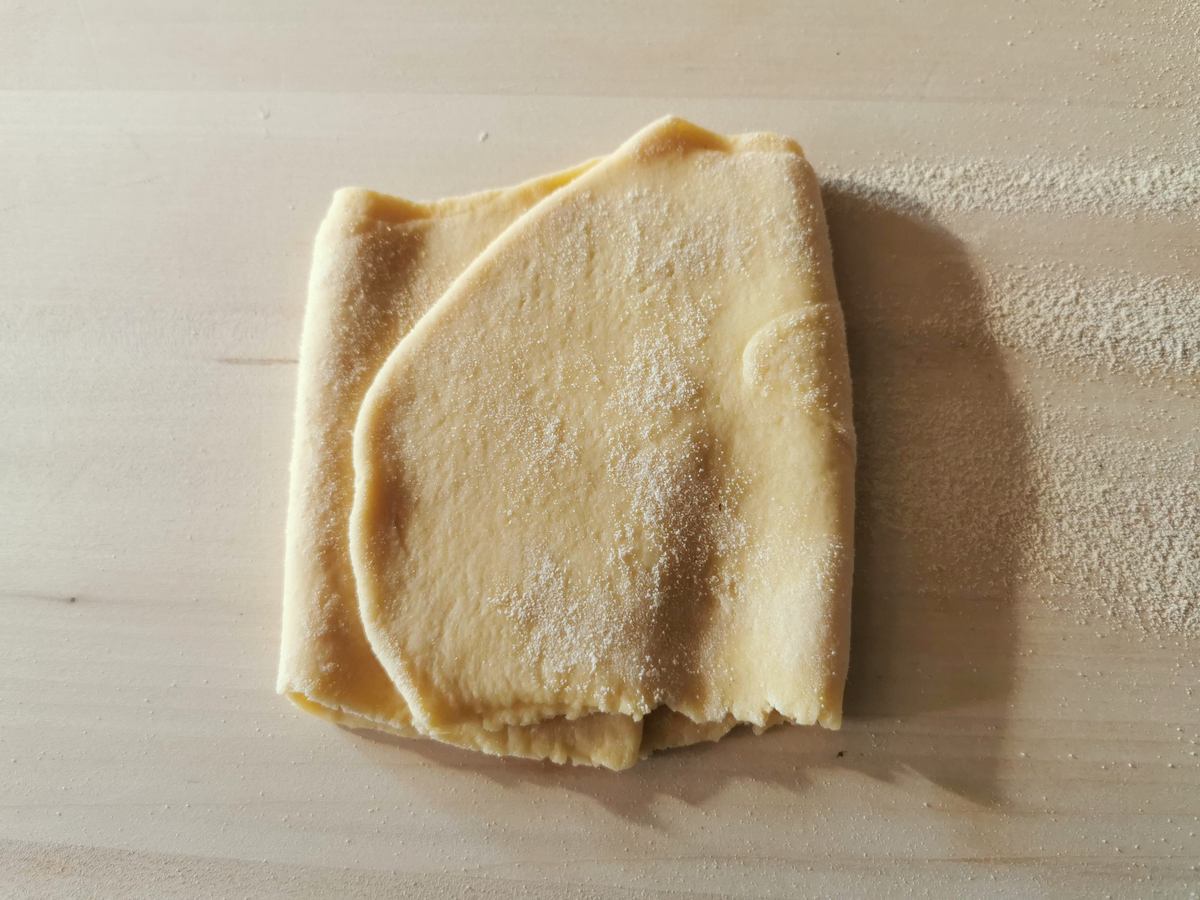
Then pass the dough sheet through two or three narrower settings (I use 5 then 3 then 2, for others it will be 3 then 5 then 6).
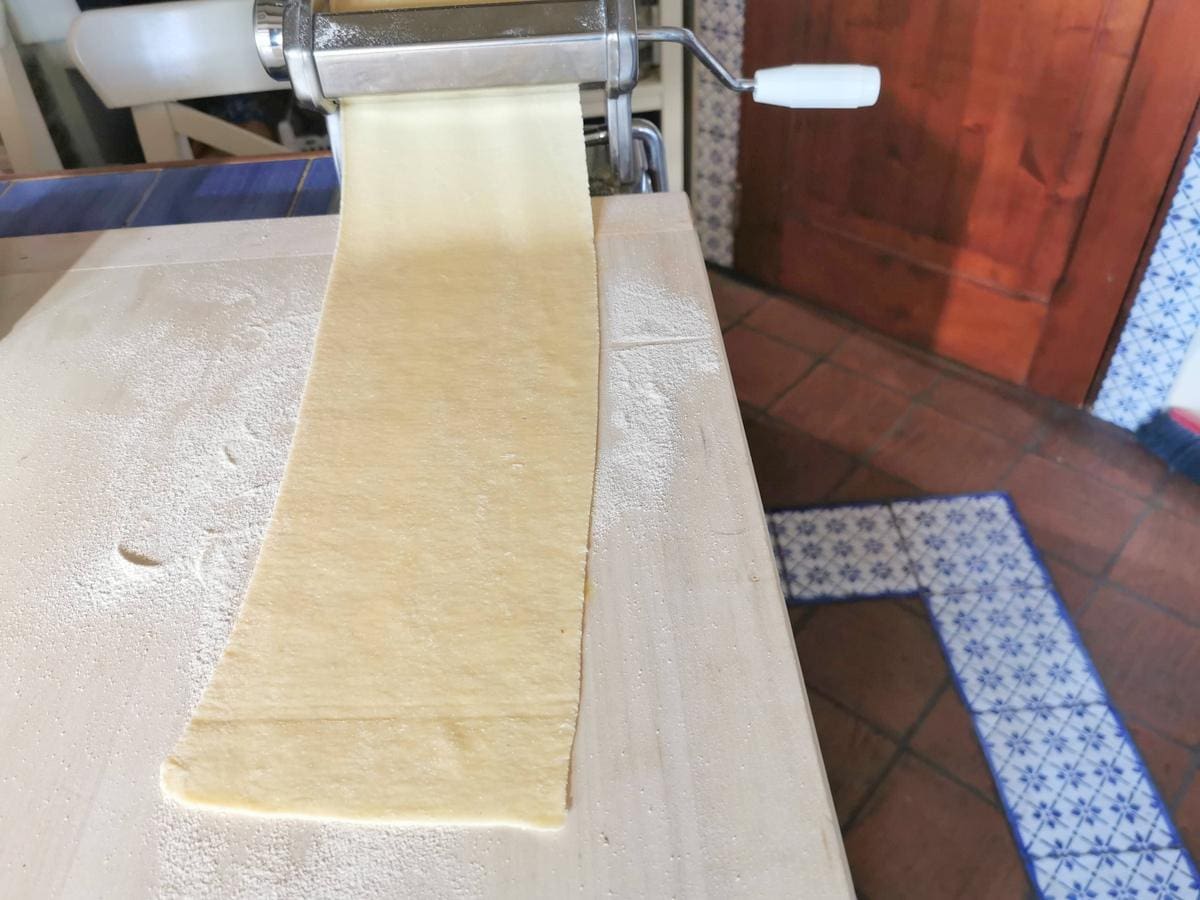
8) Place the ready dough sheet on a flour dusted wooden board or other work surface. There’s no standard length for homemade tagliatelle pasta. But in general, these ribbons are between 18 and 20 cm long. (7-8”). So, this should be the length of your ready sheets of pasta dough.
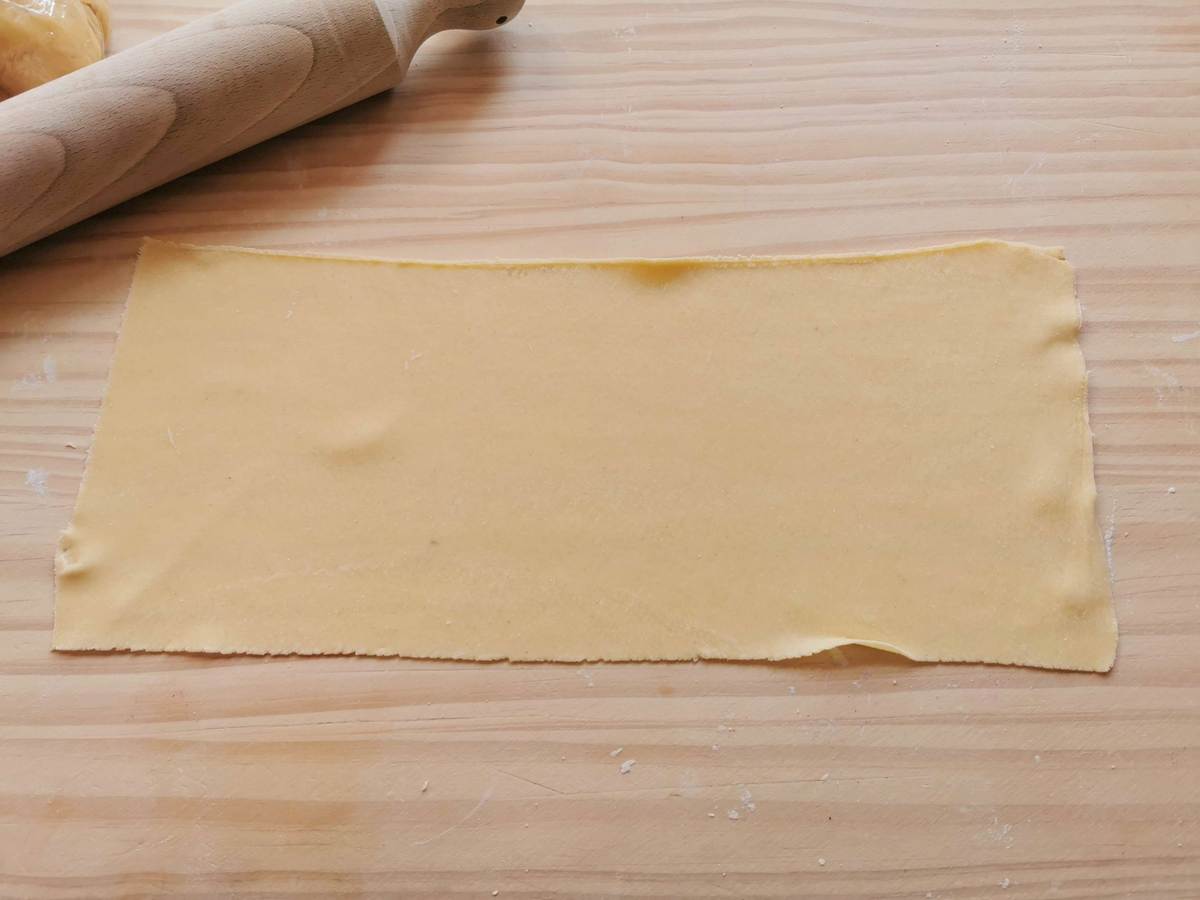
9) Now, roll the pasta sheet from the narrowest end up on itself. Then cut it with a sharp knife into rounds about 7 mm (0.25”) wide (this is the official width of tagliatelle, registered with the Bologna Chamber of Commerce). Once this is done, unroll the cut pasta rounds quickly so they won’t stick.
10) Then lay the tagliatelle pasta strands on the wooden board into portions of around 50 g (1.75 ounces), dust them with semolina flour and then roll them up in your hand to form little nests and place them on a tray covered with oven paper (parchment paper) that has also been dusted with flour.
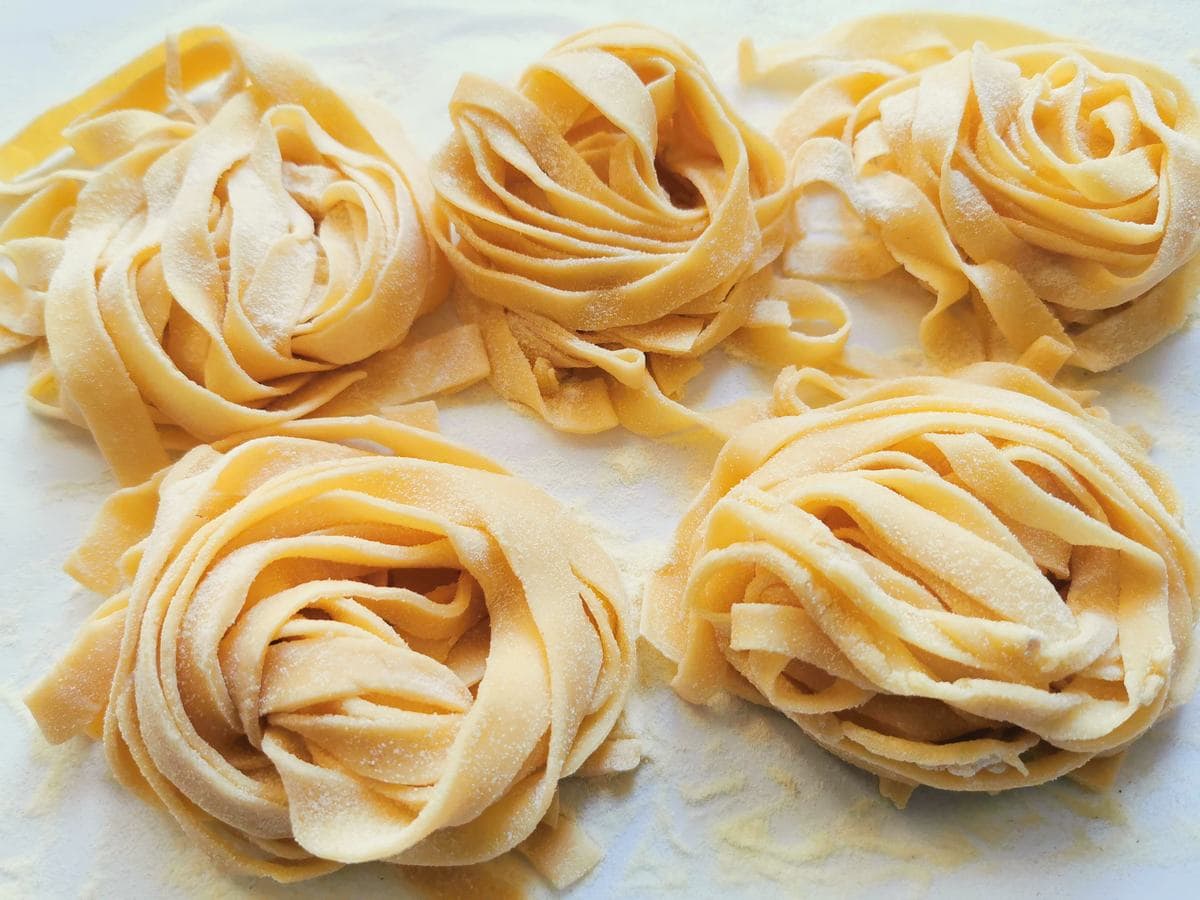
Alternatively, you can hang your ready tagliatelle on a drying rack until you are ready to cook them. Repeat the above steps with the rest of your egg pasta dough, one third at a time.
Cook’s Tip: Remilled Semolina flour (Durum flour) is the best for any dusting. It doesn’t stick to the pasta and stops the tagliatelle strands sticking to each other.
Other ways to prepare homemade tagliatelle.
Instead of rolling your fresh egg pasta dough into sheets using a pasta machine, you can roll it out in the most traditional way with a rolling pin. Tagliatelle is usually quite thin about 0.5mm (0.02”), but you can make it a little thicker.
Instead of cutting the pasta sheet into tagliatelle strands using a knife, some people use a tagliatelle attachment for pasta machines.
How to cook your tagliatelle.
Homemade tagliatelle pasta is best when cooked about 2 hours after making. Those 2 hours allow it to dry a little. Homemade tagliatelle pasta doesn’t take long to cook. Add it to boiling salted water as with other types of pasta, but it will only need 1-3 minutes to become al dente depending on the thickness. Test taste before draining. It is also traditional to cook and serve this pasta in broth.
How to store your tagliatelle.
If it’s kept in a cool and dry place, homemade tagliatelle can keep for a short time but not more than 12-18 hours, unless it’s been dried in an oven. The best and safest way to store it for more than a day is to freeze it and then cook from frozen. Once the tagliatelle nests have dried, put them in a freezer safe container and freeze them. The pasta should keep for 3-6 months.
How to serve your tagliatelle.
Tagliatelle is used in many Northern and Central Italian recipes including with Bolognese or chicken livers in Emilia Romagna, with porcini mushrooms in many Northern regions and with rabbit ragu in the Marche region. You can check out my collection of tagliatelle recipes for more ideas.
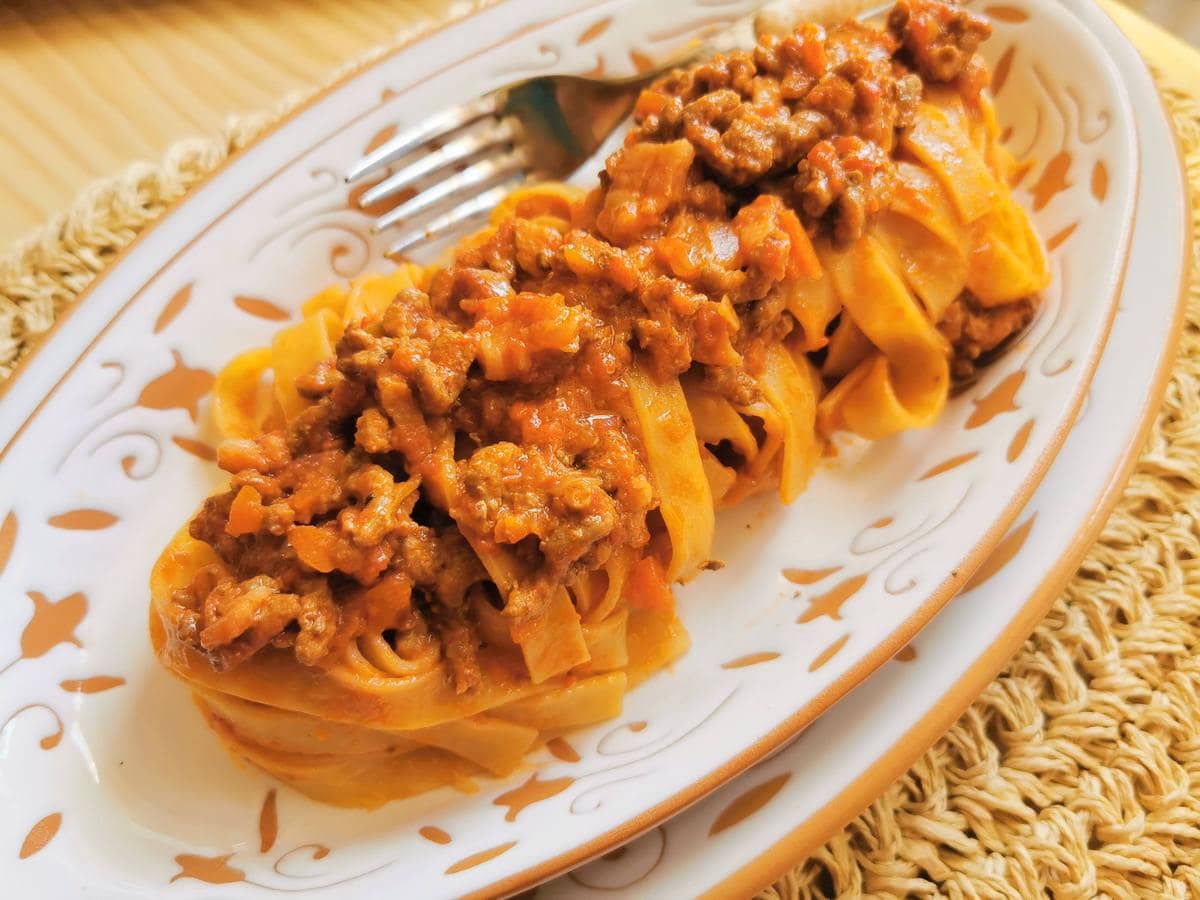
Let me know what you think.
Tagliatelle is one of my favorite homemade pasta types! This beautiful egg pasta is easy to make yourself and it tastes so much better than the store-bought version! It’s also so versatile and goes with all kinds of sauces.
If you try this homemade tagliatelle pasta recipe, I’d love to know what you think. Please write a comment below after the recipe card or on The Pasta Project Facebook page.
Your feedback means a lot to me.
Buon Appetito from Verona, Italy.
Pin for later.
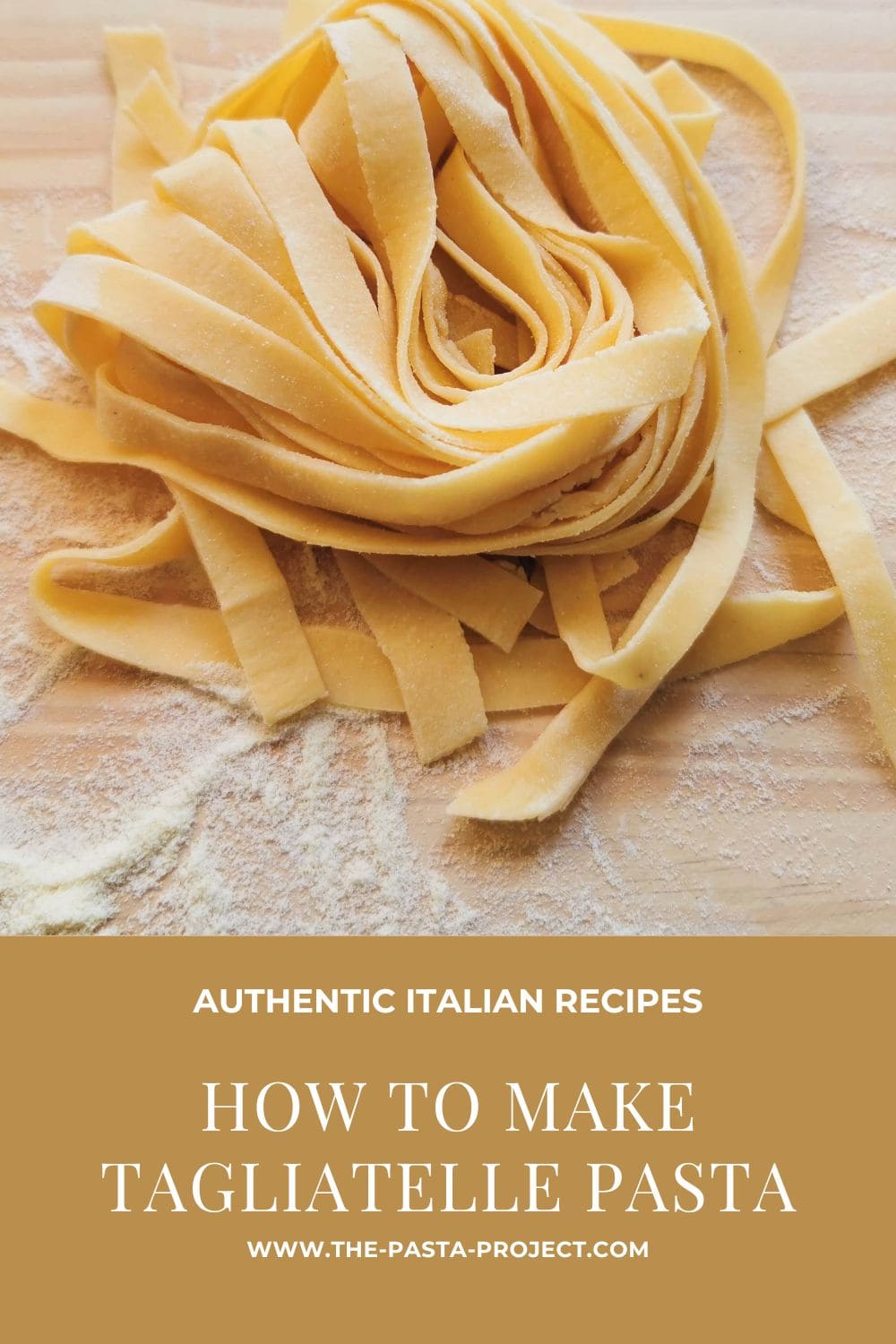
Other types of homemade pasta to try!
- Homemade garganelli with sausage ragu.
- Homemade fagottini.
- Silk handkerchief pasta with pesto.
- Homemade corzetti with marjoram and pine nuts.
- How to make orecchiette + 6 sauce recipes.
- Homemade casarecce 2 ways.
More Homemade & Fresh Pasta
Reader Interactions


